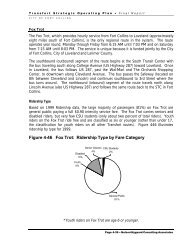Bobcat Ridge Management Plan - City of Fort Collins, CO
Bobcat Ridge Management Plan - City of Fort Collins, CO
Bobcat Ridge Management Plan - City of Fort Collins, CO
You also want an ePaper? Increase the reach of your titles
YUMPU automatically turns print PDFs into web optimized ePapers that Google loves.
Much <strong>of</strong> the savanna sustained low intensity surface fire during 2000. Some trees were torched<br />
and shrubs and grasses were top-killed by the fire. Mountain mahogany is resprouting from root<br />
bases and several native grasses are abundant. Big bluestem, like many native grasses, is welladapted<br />
to fire (Uchytil 1988). There is an abundance <strong>of</strong> fringed sage (Artemisia frigida) following<br />
the 2000 fire. This species and certain other early successional colonizers (e.g. mullein) will likely<br />
decrease in abundance over time. However, cheatgrass is abundant and dominant in many areas<br />
and may persist and expand if not addressed.<br />
Conservation Target Ponderosa Pine Savana<br />
Objectives Enhance habitat value and native character through restoration efforts<br />
designed to eradicate weeds and maintain the system through periodic<br />
natural disturbance.<br />
Natural Processes/<br />
Functions/ Interactions<br />
Threats & Stresses<br />
(Source <strong>of</strong> Stress)<br />
Seasonal grazing and periodic fire and drought are natural processes<br />
that sustain native grasslands. A June 2004 wildfire on 10 acres <strong>of</strong><br />
grassland and woodland resulted in the conversion <strong>of</strong> non-native<br />
ground cover to native grasses and forbs.<br />
• Invasion by non-native like cheatgrass and Canada thistle.<br />
• Lack <strong>of</strong> natural disturbance.<br />
Strategy/Action • Locate remnant grassland patches to determine restoration targets<br />
including species diversity and abundance.<br />
• Use a combination <strong>of</strong> targeted cool-season and dormant season<br />
grazing, prescribed fire, and enhancement seeding to convert nonnative<br />
areas to native.<br />
Measure <strong>of</strong> Success Reduced areas <strong>of</strong> non native species and increase <strong>of</strong> native species,<br />
specifically the ponderosa pine, mountain mahogany, big bluestem<br />
plant community.<br />
Conservation <strong>Plan</strong> • Complete a site restoration plan using remnant native grassland<br />
patches as a reference.<br />
• Monitor vegetation recovery from the 2004 burn; implement early<br />
season prescribed burning if area continues to demonstrate native<br />
plant recovery.<br />
• Use prescriptive grazing to reduce cool season, non native species<br />
like cheatgrass.<br />
• Introduce small scale prescribed burns to reduce the abundance <strong>of</strong><br />
widespread non-native species.<br />
• Once desired condition is achieved, proactively manage to mimic<br />
periodic natural disturbance processes (i.e. grazing, fire).<br />
16 Vegetation


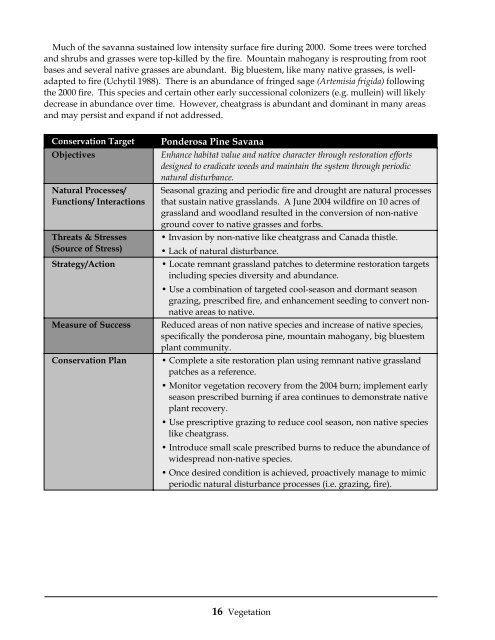

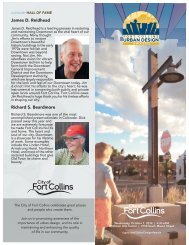
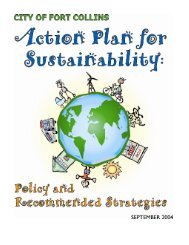

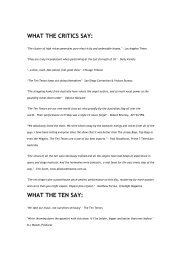


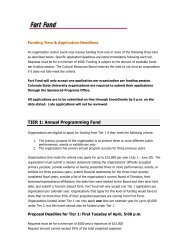

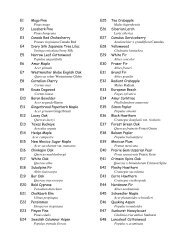


![Fort Collins Tree ID Study Guide [Compatibility Mode]](https://img.yumpu.com/20764911/1/190x135/fort-collins-tree-id-study-guide-compatibility-mode.jpg?quality=85)
